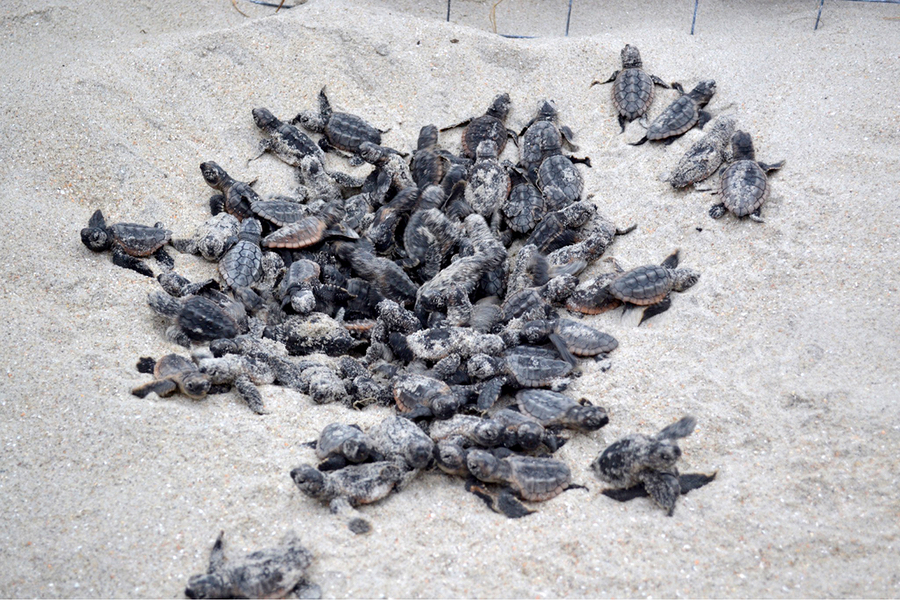It’s been a particularly good year for sea turtle nesting at Cape Hatteras National Seashore this year. Wildlife managers are reporting that at the halfway point in the nesting season they have already counted 206 nests. That pretty much on pace with last year’s strong showing of 373 nests.
Most of the nests are loggerhead turtles—191. That’s no surprise. Loggerhead turtles are the most common sea turtle along the Outer Banks.
There have also been 11 Green Turtle nests and even three Kemp’s Ridley nests identified. That’s great news because the Kemp’s Ridley is considered endangered.
The most exciting find this year, though, was the leatherback turtle next identified on Ocracoke Island. According to wildlife manager at CHNS, it’s the first time in 11 years that a leatherback eggs have been seen at the national seashore.
The Leatherback is an endangered species. NOAA Fisheries, the federal agency that monitors sea turtles, estimates that worldwide the turtle’s population has decreased 40% in the past 50 years. Much of that decline is in the Pacific Ocean, but even in the Atlantic nesting activity is in decline.
The Leatherback is the largest sea turtle in the world, weighing up to 2000 pounds. interestingly, though, it feeds exclusively on jellyfish and saps, a small jellyfish-like invertebrate.
Typically nesting sites are roped off and no one is allowed into the site
There are some do’s and don’ts to help ensure a more successful hatching, or boil, as it is called.
It is very important to not disturb the nest. For anyone who has the good fortune to be present when a boil occurs, lights out is an absolute necessity. Any light at night will disorient the hatchlings and will often keep them from getting to the ocean in time.
With so much happening all the time on the Outer Banks, sometimes we need a reminder of just how close to nature we really live on this sandbar by the sea. From Carova to Hatteras, there is so much to explore and a Brindley Beach Vacations home offers the perfect vacation location.

